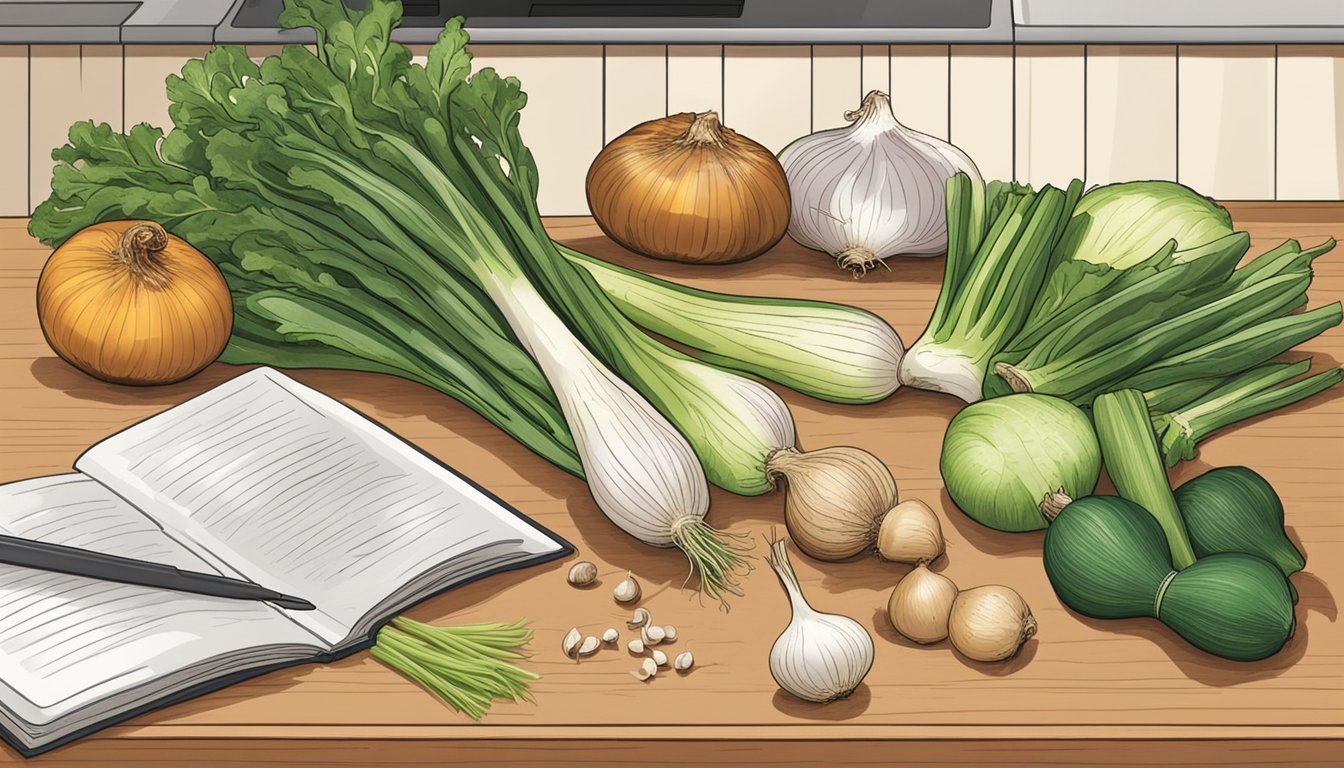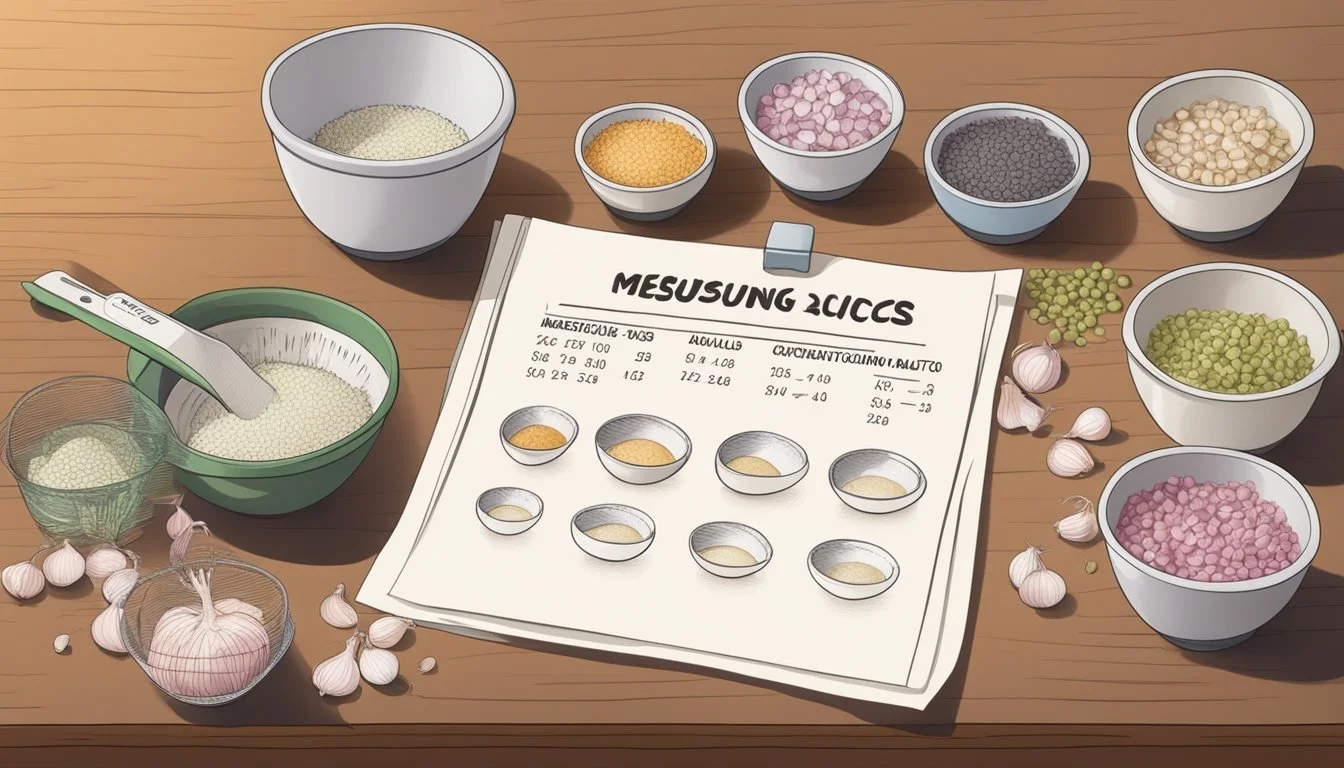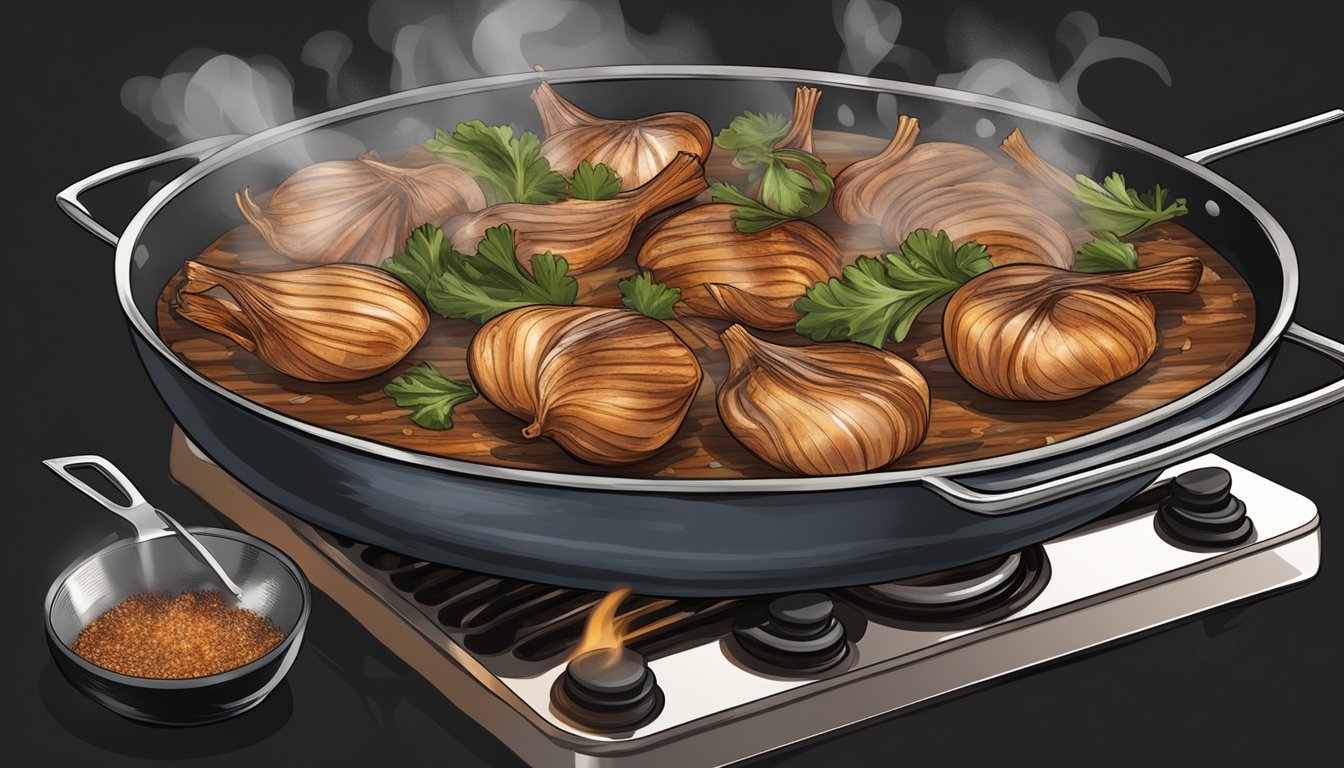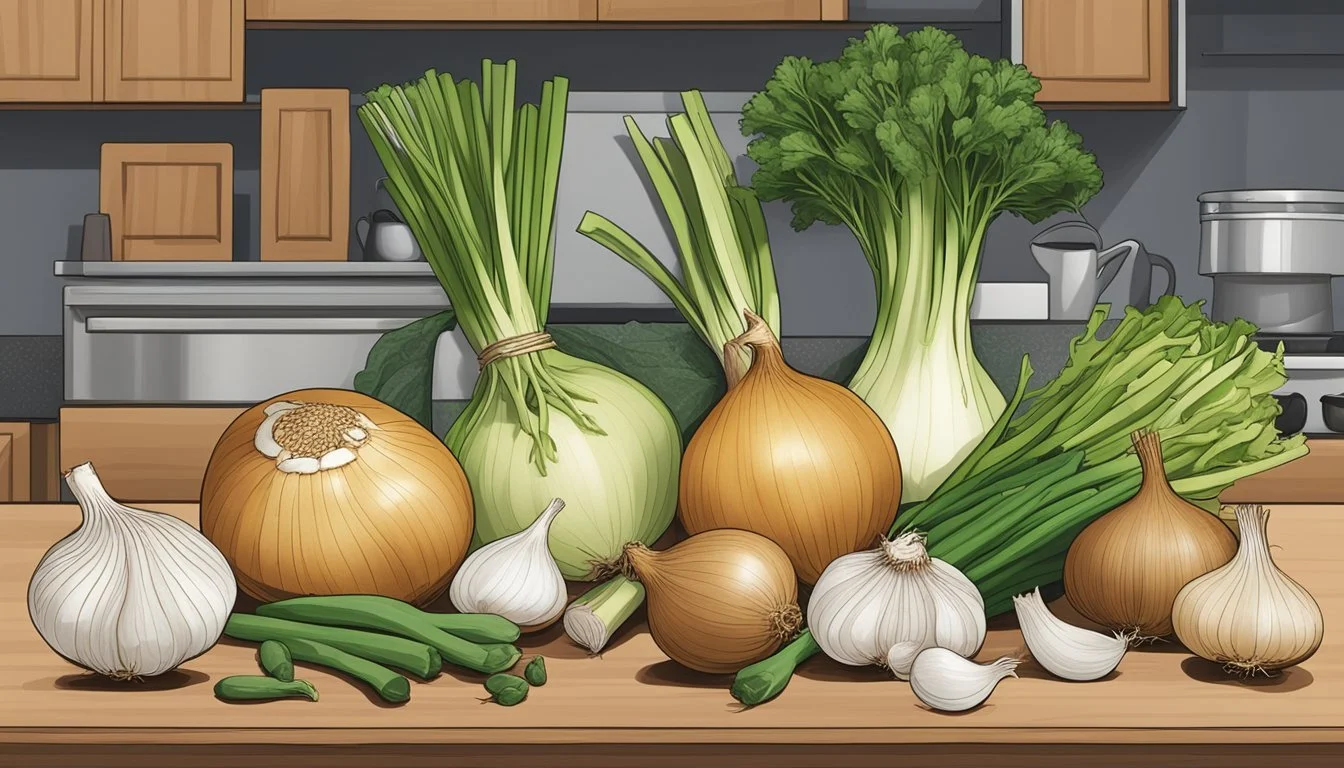Shallots Substitutes
Best Alternatives for Cooking
When your recipe calls for the distinctive flavor of shallots and you're fresh out, there's no need to stress. It’s quite simple to find suitable replacements that can provide a similar taste profile. Leeks, yellow onions, red onions, scallions, chives, and garlic all serve as excellent substitutes for shallots. These ingredients can replicate the mild, sweet flavor that shallots bring to dishes, ensuring your culinary creations remain deliciou
Each alternative brings its own unique qualities to the table. For instance, while sweet onions like Vidalia may have a more pronounced flavor, they can still blend well in recipes that require shallots. The key lies in understanding these substitutes and knowing how to utilize them effectively.
Exploring the pantry for shallot substitutes can open up a world of new flavors. While leeks and scallions might offer a closer taste to shallots, even a bit of minced garlic or finely chopped red onion can suffice. By keeping these substitutes in mind, you can cook confidently and creatively without missing a beat.
Understanding Shallots
Shallots bring a unique blend of flavor and aroma to dishes, often compared to onions and garlic due to their placement in the allium family. Their distinct characteristics and versatile culinary applications make them a staple in many kitchens.
Characteristics of Shallots
Shallots, belonging to the Allium cepa species, are a type of onion typically smaller and more bulbous. They are encased in a thin, papery skin that ranges from golden brown to red. When peeled, their flesh can be white, purple, or a mixture of both, often featuring multiple cloves within a single bulb.
The flavor of shallots is milder and sweeter compared to regular onions. They combine the subtle sharpness of garlic with the delicate sweetness of onions, making them an ideal ingredient for adding complexity to dishes without overwhelming other flavors.
Shallots are not as pungent as their allium relatives. Their aroma is more refined, which contributes to their popularity in fine dining and gourmet recipes. Their unique flavor profile makes them indispensable in many cuisines around the world.
Culinary Uses of Shallots
In cooking, shallots are highly versatile. They can be used raw or cooked, making them suitable for a wide range of dishes. When used raw, shallots add a mild, sweet flavor to salads, dressings, and vinaigrettes. They provide a gentle crunch and a nuanced taste that enhances fresh dishes without overpowering them.
Cooking with shallots caramelizes their natural sugars, resulting in a rich, sweet flavor. They are often sautéed, roasted, or braised and are commonly used in sauces, soups, stews, and casseroles. Shallots are also a popular choice for making the classic French sauce, Béarnaise.
Chopped shallots serve as an aromatic base for many recipes, particularly in French and Mediterranean cuisines. They are frequently used in reduction sauces and as a key ingredient in compound butters. The subtle complexity they bring makes them a valuable addition to any pantry.
Common Shallot Substitutes
When substituting for shallots, common alternatives include various types of onions, garlic in different forms, and other alliums like leeks and scallions. These options can replicate the flavor and texture of shallots in many dishes.
Onions as a Substitute
Yellow onions, white onions, and sweet onions are among the most effective substitutes for shallots.
Yellow onions have a strong flavor and can be used in cooked dishes where the sharpness will mellow.
White onions are similar but slightly milder. Sweet onions, like Vidalia or Walla Walla, add a sweeter touch.
Tip: Use half an onion for every one shallot to adjust for the larger size and stronger flavor.
Garlic and Its Forms
Garlic can be a potent substitute, lending a more robust and aromatic quality to dishes.
Garlic cloves are the most direct replacement, with one clove often sufficient for a single shallot.
Garlic scapes, the green shoots of the garlic plant, offer a milder garlicky flavor. These can be chopped finely and used similarly to shallots in salads and garnishes.
Tip: Adjust the quantity based on the desired pungency and delicacy of the final dish.
Leeks, Scallions, and Other Alliums
Leeks have a mild taste and can be a good substitute when thinly sliced.
Scallions (green onions) provide a sharp, fresh flavor that works well both raw and cooked.
Chives, known for their delicate onion-like taste, are ideal in dishes where shallots would be used as a garnish.
Tip: For every medium shallot, use about a tablespoon of chopped green parts of leeks or scallions.
Each of these alliums brings a unique profile, making them versatile replacements depending on the recipe.
Selecting the Right Substitute
Choosing a suitable substitute for shallots often depends on the specific recipe and desired flavor profile. While some substitutes will work best in particular dishes, considering both the flavor profiles and intensities is crucial for an optimal match.
Considering the Recipe
When choosing a substitute for shallots, the type of recipe is a primary consideration. In soups and stews, pearl onions or yellow onions can provide a similar texture and flavor. For recipes requiring a raw ingredient, such as salads, red onions can be a suitable option due to their crisp texture and mild flavor.
In dishes like risottos, pastas, or casseroles, leeks can be a good replacement, especially when using the white and light green portions. When precision is key, noting that some ingredients require a 1:1 ratio while others might need adjustment is important. For example, using one medium leek for every medium shallot helps maintain balance in recipes.
Flavor Profiles and Intensities
Understanding the specific flavor characteristics of substitutes ensures a closer match to shallots. Yellow onions have a slightly pungent and sharp flavor but contain a mild sweetness, making them versatile. Use these in a proportion of 1/2 cup for 1 cup of shallots to balance the dish's overall flavor.
Red onions offer a sweet yet sharp flavor, ideal for adding color without overwhelming the dish. They work well both raw and cooked. Leeks, with their milder and sweeter flavor, are less intense than shallots but can be used effectively in a variety of recipes. Using a 1:1 ratio works well but, in some cases, slightly more leeks might be needed for depth of flavor.
Carefully selecting a shallot substitute while considering the specific needs of your dish can significantly impact the final outcome.
Substitution Ratios and Measurements
When substituting shallots in recipes, precise ratios and measurements are crucial.
Yellow Onion
For every 1 cup of chopped shallots, replace with 1/2 cup of chopped yellow onion.
Red Onion
Substitute 1:1. If the recipe calls for 1 cup of chopped shallots, use 1 cup of chopped red onions.
Leeks
Use the white and light green parts only. Substitute 3-4 leeks for 1 medium shallot when raw and chopped.
Garlic Cloves
For every 1 tablespoon of shallots, use 2-3 large garlic cloves.
Scallions (Green Onions)
Substitute at a 1:1 ratio. Use the white part of the scallion for a similar flavor to shallots.
Roasted Garlic
Use 1 head of roasted garlic to substitute for 1/2 cup of chopped shallots.
Chives
When finer texture is needed, 1 tablespoon of chopped chives can replace 1 tablespoon of chopped shallots.
These substitutions ensure that flavors are as intended, enhancing the dish without compromising taste.
Additional Shallot Alternatives
There are several substitutes for shallots that can be used in a variety of dishes. These alternatives range from common pantry items to less conventional choices, each providing distinct flavors and applications.
Using Garlic Powder and Onion Powder
Garlic powder and onion powder offer convenient and easy substitutes for shallots. Garlic powder brings a more intense garlic flavor while eliminating the texture of fresh garlic cloves. It works well in dressings, marinades, and sauces where smooth consistency is desired.
Onion powder provides the subtle onion flavor of shallots without the moisture content. It’s particularly helpful in dry rubs or when cooking dishes that require a fine, even distribution of flavor without additional liquid. Both powders should be used in small amounts and adjusted to taste, as their concentrated nature can overwhelm the dish if overused.
Utilizing Sweet and Red Onions
Various sweet onions like Vidalia, Walla Walla, and Maui can stand in for shallots. These onions are known for their mild, sweet flavor and low sulfur content. Vidalia onions are especially adept at replacing shallots due to their balanced sweetness and juicy texture.
Red onions can also replace shallots. Their sharper flavor and purplish hue make them a visually appealing option in salads and salsas. Red onions should be used in moderation to prevent overpowering the dish. Substituting half the amount of red onion for the required amount of shallots is a practical approach.
Exotic and Lesser Known Substitutes
For a unique twist, consider alternatives like pearl onions and cipollini onions. Pearl onions are small, sweet, and perfect for pickling or roasting. Their mild flavor profile and tender texture mimic shallots nicely in stews and casseroles.
Cipollini onions, with their squat shape and rich taste, work well in caramelized dishes. Their natural sweetness is enhanced when roasted or braised, making them a flavorful choice for gourmet recipes. Spanish onions offer another option, being larger and milder, suitable for recipes requiring bulk without overpowering the overall flavor.
Each of these substitutes provides specific attributes that can enhance the versatility and complexity of various dishes, offering cooks numerous options to explore in their culinary endeavors.
The Impact of Cooking Methods
The effect of cooking methods on shallot substitutes can significantly influence the flavor and texture of a dish. Whether used raw, sautéed, or caramelized, the method chosen can alter the substitute's qualities.
Raw vs. Cooked Applications
Raw substitutes for shallots, such as yellow onions or leeks, maintain their sharpness and intensity. They work well in salads, dressings, and salsas where a more pungent flavor is desired. Raw leeks or yellow onions should be finely chopped to avoid overwhelming other ingredients with their stronger taste.
Cooked substitutes, like sautéed cipollini or pearl onions, offer a mellow, sweet flavor. Cooking these substitutes softens their texture and reduces their sharpness. When used in soups or casseroles, cooked onions blend seamlessly with the other ingredients, enhancing the dish's depth.
Adjusting for Texture and Caramelization
Texture and caramelization play a crucial role in cooking with shallot substitutes. Sautéing or roasting substitutes, such as garlic or cipollini onions, develops their natural sugars, leading to a rich, caramelized flavor.
For sautéed substitutes, cook over medium heat until lightly browned. This method is ideal for creating a tender texture that mimics caramelized shallots.
Roasting substitutes like pearl onions in the oven at high heat will yield a deeply caramelized finish. This technique is perfect for dishes requiring a more pronounced, sweet flavor.
Adjusting cooking times and temperatures when using these substitutes ensures the final dish has the desired taste and texture. Different substitutes can be experimented with raw or cooked to match the specific needs of the recipe.
Incorporating Substitutes into Various Dishes
Substitutes for shallots can be seamlessly incorporated into a variety of dishes. Each subsection will delve into specific meal types, showcasing how to best utilize alternatives like leeks, yellow onions, and red onions.
Salads and Dressings
Leeks and red onions work exceptionally well in salads and dressings. Their mild, sweet flavors complement fresh vegetables. Finely slice leeks and use them in green salads for a subtle, onion-like taste.
Red onions add a vibrant color and can be mixed into vinaigrettes or creamy dressings. When used in raw salads, they provide a crisp texture and a slight pungency. Balancing the intense flavor with a touch of lemon juice helps mitigate sharpness.
Hearty Meals and Stews
Yellow onions, cipollini onions, and pearl onions are excellent for hearty meals and stews. Yellow onions, with their balanced sweetness, work well as a shallot substitute in beef stews, soups, and casseroles.
Cipollini onions, smaller and sweeter, can replace shallots in slow-cooked dishes. In stews, they melt into the dish, creating a rich, savory foundation. Pearl onions can also be used in similar recipes but require extra preparation, such as peeling.
Italian and Other Cuisines
In Italian dishes like risottos, pastas, and omelets, both leeks and yellow onions shine as shallot substitutes. Leeks bring a mild flavor that melds well with creamy risotto, enhancing the dish without overpowering it.
Yellow onions are versatile for various pastas, offering a similar sweetness to shallots. For omelets, sauté yellow onions or finely chop red onions to get a burst of flavor that pairs well with eggs and cheese. Use these alternatives to maintain the intended taste and texture in traditional and contemporary dishes.
Nutritional and Dietary Considerations
When considering substitutes for shallots, it's important to look at nutritional content.
Shallots are rich in potassium, zinc, and folate.
Yellow onions, one popular substitute, also contain significant nutrients, although their micronutrient concentration varies slightly compared to shallots.
Nutritional Comparison:
Nutrient Shallots Yellow Onions Potassium 7% of the DV* 5% of the DV Zinc 4% of the DV 3% of the DV Folate 9% of the DV 6% of the DV
*DV = Daily Value
Fiber Content
Vegetables like leeks and garlic also serve as good substitutes. Both leeks and garlic provide similar health benefits and contain dietary fiber, which is important for digestive health.
Health Benefits
Each vegetable carries unique benefits. Leeks, for instance, are known for their role in supporting heart health. Garlic is famed for its antioxidant properties. These substitutes can enhance one's diet through varied micronutrient profiles. Using a mix of these can ensure a balanced intake of essential vitamins and minerals.
When replacing shallots in recipes, it's crucial to maintain nutritional balance. This approach helps in sustaining dietary benefits without compromising on flavor.
Tips for Growing and Storing Substitutes
Shallots and their substitutes, such as green onions and garlic cloves, thrive in well-drained soil.
For optimal growth, ensure the soil is rich in organic matter. Plant onion family members in a sunny spot with a pH level between 6.0 and 7.0.
Green onions should be spaced about 1-2 inches apart in rows. They require regular watering, but avoid waterlogging.
Shallots grow best when their pointed ends face upward, spaced 6-8 inches apart. Their soil should remain moist but not soggy.
Harvesting green onions can occur when they reach about 6 inches in height. They can be pulled directly from the ground.
Garlic cloves should be planted in fall and harvested the following summer. Plant each clove 2 inches deep and 6 inches apart.
When storing these substitutes, follow these guidelines:
Shallots: Keep in a cool, dry, and dark place. Avoid refrigeration as it can cause sprouting.
Green onions: These should be stored in the refrigerator. Place them upright in a glass with a little water, and cover with a plastic bag.
Garlic cloves: Store in a dry, well-ventilated area. Keep them in a mesh bag or a loosely covered container.
Proper storage ensures the freshness and longevity of these substitutes, making them readily available for your culinary needs.






